Inside\Within is a constantly updating web archive devoted to physically exploring the creative spaces of Chicago's emerging and established artists.
Support for this project was provided by The Propeller Fund, a joint administrated grant from Threewalls and Gallery 400 at The University of Illinois at Chicago.

Search using the field below:
Or display posts from these tags:
3D printing 3D scanning 65 Grand 7/3 Split 8550 Ohio 96 ACRES A+D Gallery ACRE animation Art Institute of Chicago Arts Incubator Arts of Life audio blogging Brain Frame CAKE Carrie Secrist Gallery casting ceramics Chicago Artist Writers Chicago Artists Coalition Chicago Cultural Center Cleve Carney Art Gallery Clutch Gallery Cobalt Studio Coco River Fudge Street collage collection Columbia College Chicago Comfort Station comics conceptual art Contemporary Art Daily Corbett vs. Dempsey Creative Capital DCASE DePaul University design Devening Projects digital art Dock 6 Document drawing Duke University dye Elmhurst Art Museum EXPO Chicago Faber&Faber fashion fiber Field Museum film found objects GIF Graham Foundation graphic design Harold Washington College Hatch Hyde Park Art Center illustration Image File Press Imagists Important Projects ink installation International Museum of Surgical Science Iran Jane-Addams Hull House Museum jewelry Joan Flasch Artist's Book Collection Johalla Projects Julius Caesar Kavi Gupta Links Hall Lloyd Dobler LVL3 Mana Contemporary metalwork Millennium Park Minneapolis College of Art and Design Monique Meloche Museum of Contemporary Art Chicago (MCA) Museum of Contemporary Art Detroit (MOCAD) Museum of Contemporary Photography (MoCP) National Museum of Mexican Art (NMMA) National Resources Defense Council New Capital Northeastern Illinois University Northwestern University Ox-Bow painting paper mache Peanut Gallery peformance Peregrine Program performance photography PLHK poetry portraiture printmaking public art Public Collectors publications Renaissance Society risograph rituals Roman Susan Roots&Culture SAIC screen printing sculpture Sector 2337 Shane Campbell Silver Galleon Press Skowhegan Slow Smart Museum Soberscove Press social practice South of the Tracks Storefront SUB-MISSION Tan n' Loose Temporary Services Terrain Terrain Biennial text-based textile textiles The Banff Centre The Bindery Projects The Cultural Center The Franklin The Hills The Luminary The Packing Plant The Poetry Foundation The Poor Farm The School of the Art Institute of Chicago (SAIC) Threewalls Tracers Trinity College Trubble Club University of Chicago University of Illinois at Chicago (UIC) University of South Florida at Tampa Valerie Carberry Vermont Studio Center video weaving Western Exhibitions wood carving woodwork Yellow Book Yollocalli Arts Reach zinesInside\Within is produced in Chicago, IL.
Get in touch:
contactinsidewithin@gmail.com
Renee Robbins's Macro-Biotic Breeds

Renee generates minute and magnificently detailed lifeforms in her home and studio a short walk from the California Blue Line. By exploring both the macro and micro, she creates hybrid environments not found in the world or known cosmos.
I\W: Can you explain your Daily Drawings project?
RR: I started it because I wanted to change my work. I was really frustrated with my larger canvases that I was working on, so I wanted to do this to really challenge myself. I was getting really precious with my mark-making. At the beginning of each week I would come up with a structure, or format, or color palette for the group of drawings to limit myself. I did them in a suite by the week. They were all gouache and colored pencil and moved back and forth between abstraction and representation. I am really interested in the natural world and science—from the micro to the macro.
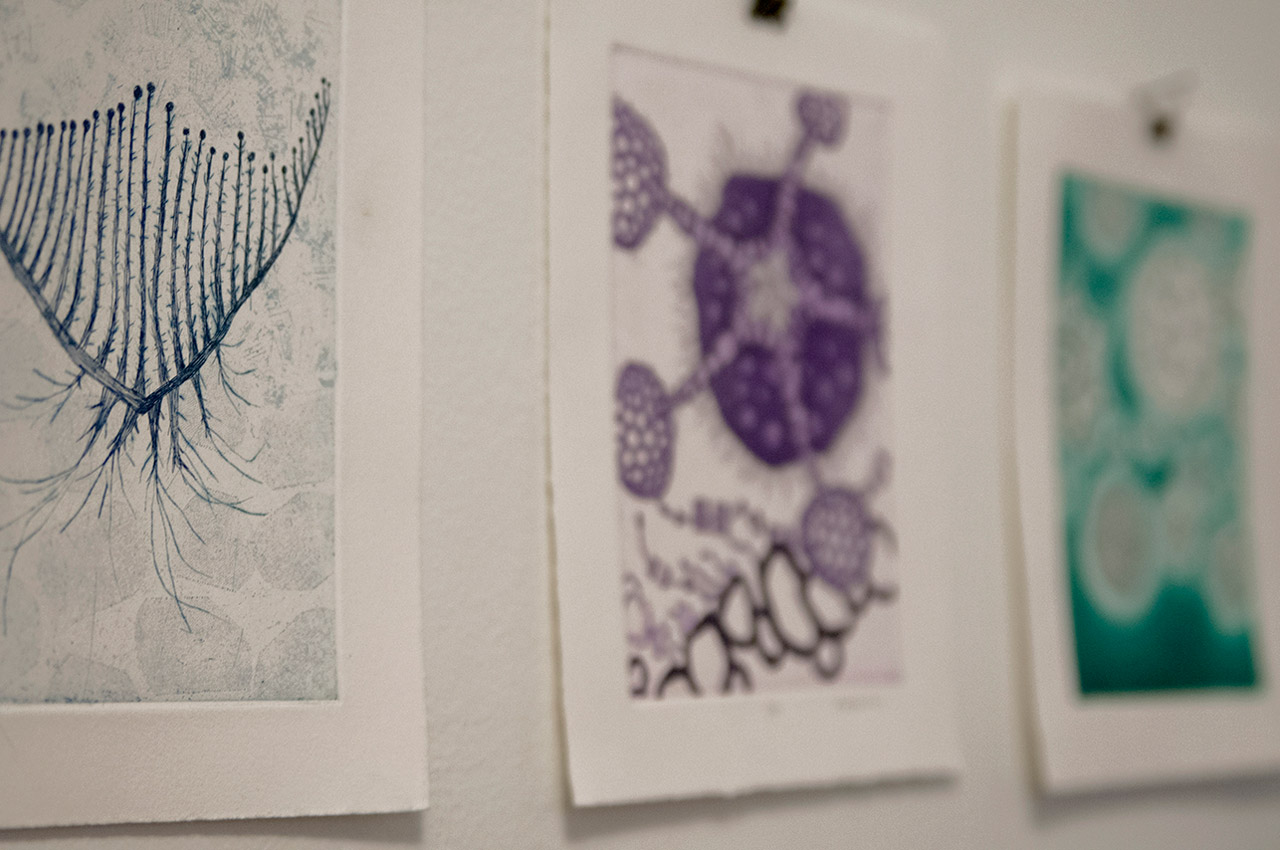
What is the process behind your larger paintings?
Usually I start the background with a flat color. I work 10 to 15 pieces at once. Throughout a day I will probably work with 4-5 pieces because I will get stuck on a piece and don’t know how to move it forward. Sometimes working on one painting will help another painting move forward—they play into each other.
I feel like the painting process is similar to the scientific method in a way. You are testing different colors or compositions and seeing what works and what doesn’t.
The hardest part for me is the background. Creating the atmosphere. But I really enjoy making all of the tiny patterns. I am always doing works on paper in addition to the larger paintings. Sometimes I take images from a small drawing that I do and bring them into my larger work, or I might zoom in on a painting and make a small drawing based on that section. I source some of my own imagery in trying to develop new works.

What inspired you to do very scientifically-oriented work?
It’s something that I have always been interested in. As a kid I wanted to be a marine biologist. I think science and art go hand in hand. I have a curiosity about the world, and that is one of the things that motivates me as an artist. I am so excited by the variety of different species. There are so many different diatoms in the ocean. I feel like the painting process is similar to the scientific method in a way. You are testing different colors or compositions and seeing what works and what doesn’t.
Do you ever get stuck on one scientific area, or did you combine the marine, plant life, and cosmos together?
One thing I want to do is create hybrids. I want to combine a molecular pattern with the structure of a plant, then put that within a star constellation so that the forms are not necessarily one thing or the other—but so there is a mystery. A lot of these forms don’t exist in nature, but they are a blend of different organisms.
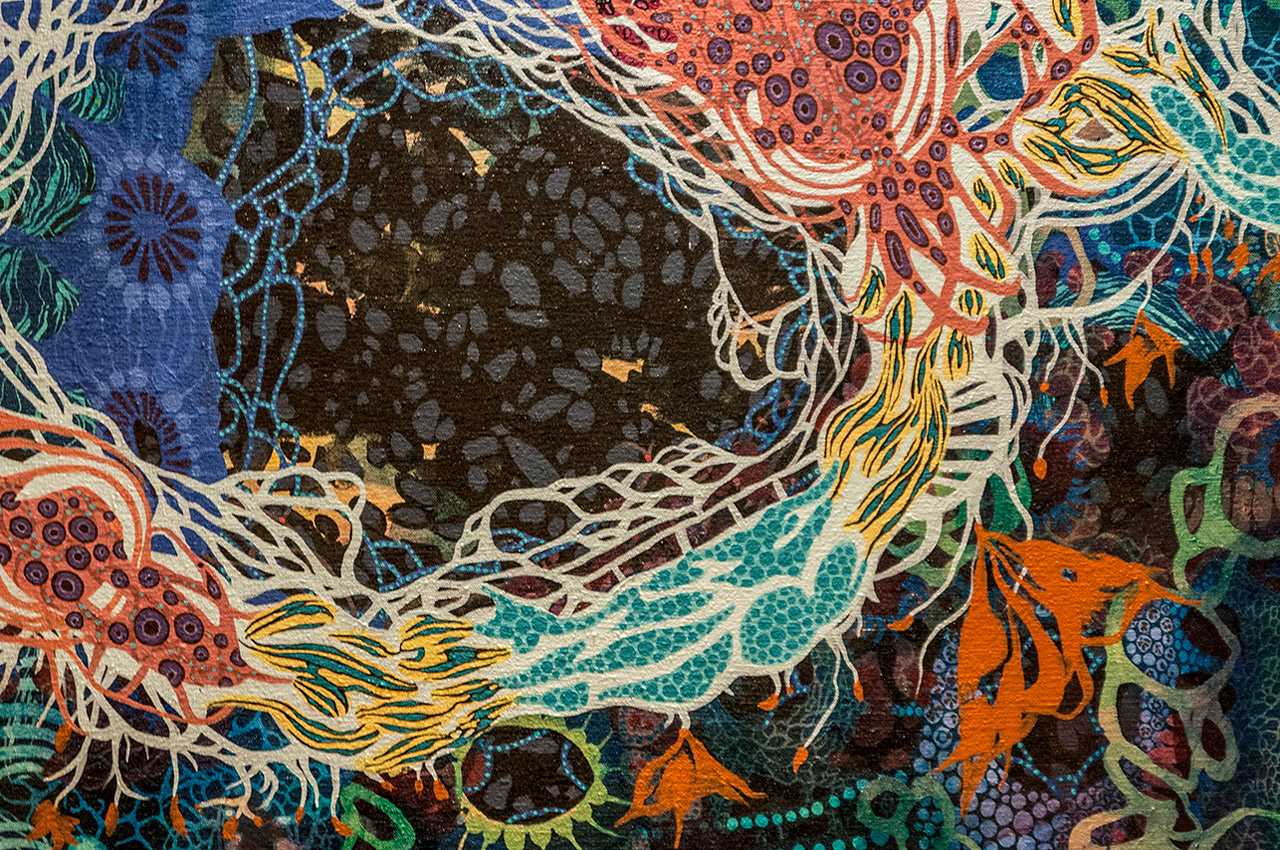
Do you look to scientific images for inspiration?
I do. I have books and images all around. I don’t usually reference them exactly, but try to filter them through my own language. I may use an image to think of a color, or take a pattern from a fish and superimpose that on another abstract form.
Your work was recently classified by a scientist at the University of Colorado. How did she find your paintings?
She found me on the Internet and the scientist said she wanted to classify some of the diatoms in my paintings. Diatoms are like plankton: single-celled organisms that live in the sea. They are these tiny microscopic creatures. For my work I look at stuff and think I am inventing, but she knew exactly what they were and classified them.
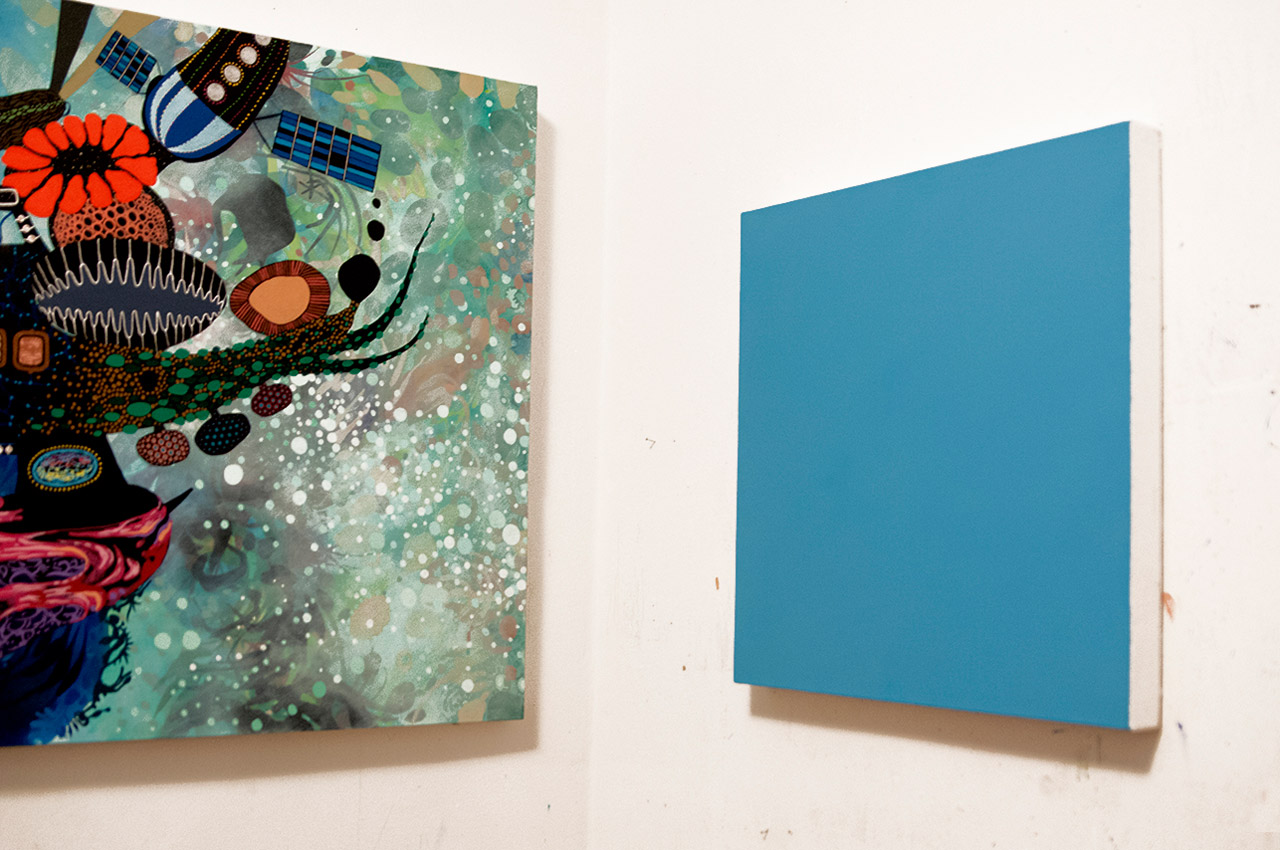
How long have you been creating the macro/micro paintings?
When I was in college and learning to draw through the figure, I would start to draw the veins and cells. Even as a young artist I had that interest in the micro. When I was first allowed to start creating my own ideas, I did this diagram of a plant cell with the mitochondria and then animal cells. I entered into painting by looking through a lot of scientific images through biology books.
Can you tell me about Love Letters to the Ocean?
That is a new body of etchings I’ve been working on. It’s very process-driven. There are a lot of mistakes that can happen, but it’s really fun to draw on a copper plate. There is something very sculptural and physical about that. It’s all one color. It’s been nice to strip it down to that to focus on the forms and value. I call them my love letters because they are all kind of like my heroes. They are off all of these creatures that I am deeply obsessed with.
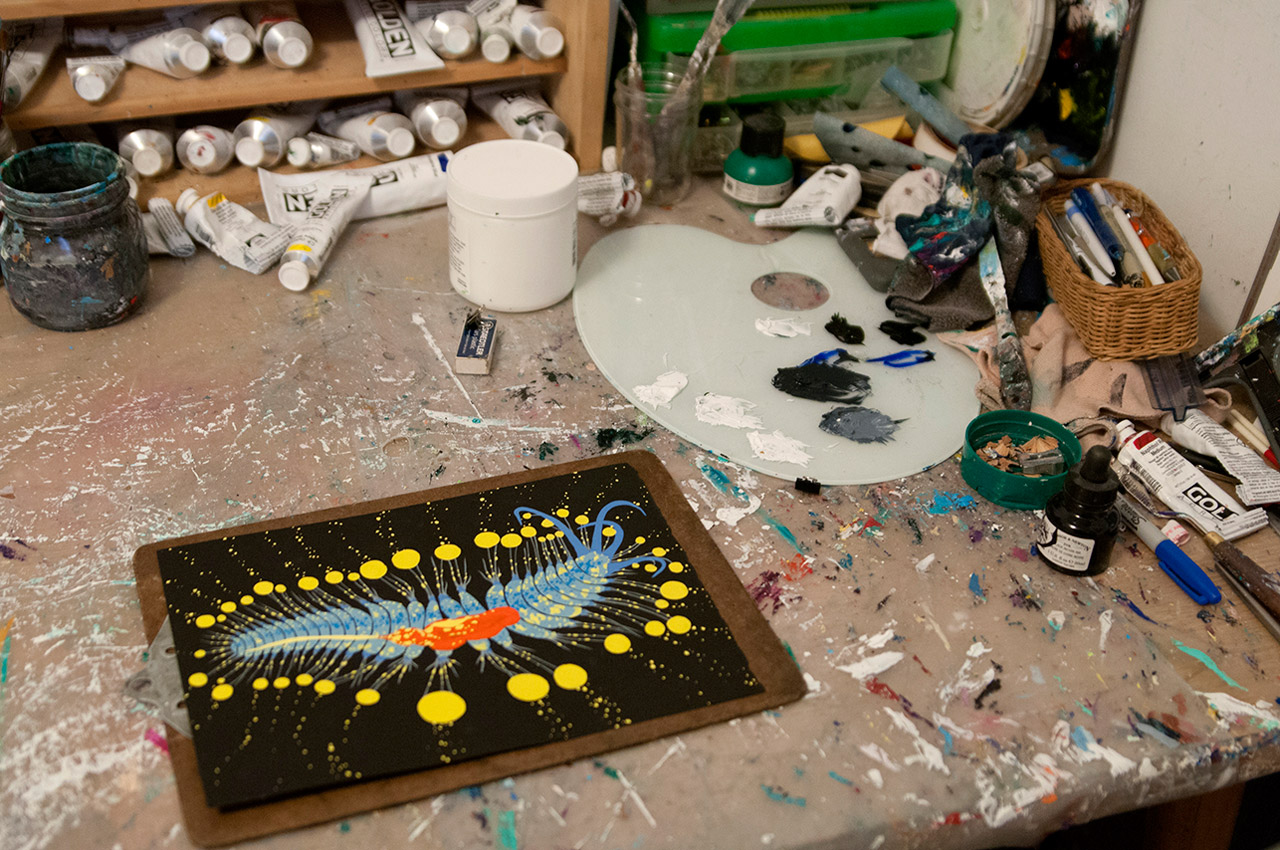
Do you have any limitations in your work?
I am always trying to challenge myself. If it’s not a struggle, I need to change something. Sometimes I will give myself guidelines as a way to get started. There are almost too many decisions, so sometimes limiting the choices moves things along. I think my painting can be very analytical, but also very intuitive.
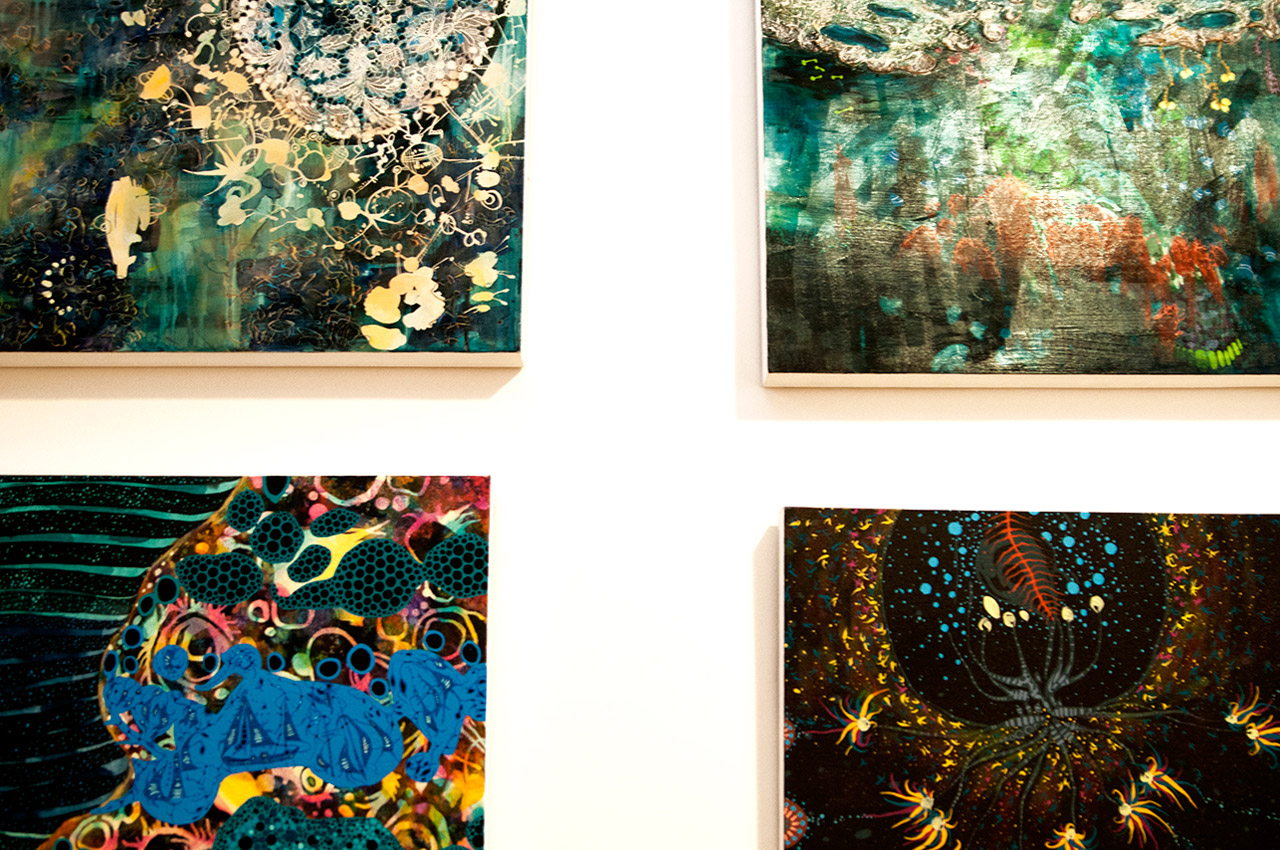
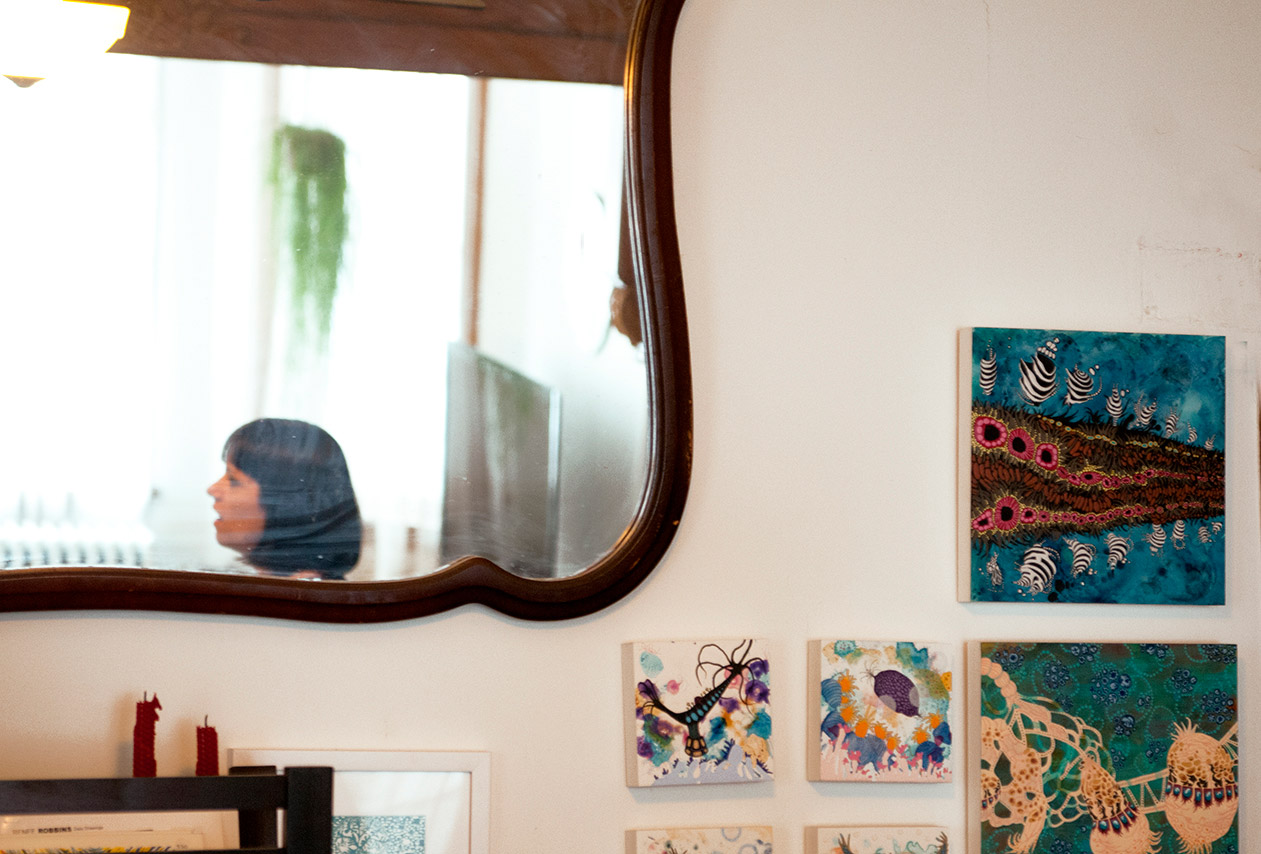
How does the private and public life play into your work?
I see it as how we form our own identity. There is a very private part of ourselves, our thought process, but then a very public part of ourselves—how we look, how we converse. I think that also relates to the invisible and the visible and the public and private is the core of the work. It shows how we connect to the world. The materials that make up our bodies and what we interact with throughout our environment.


